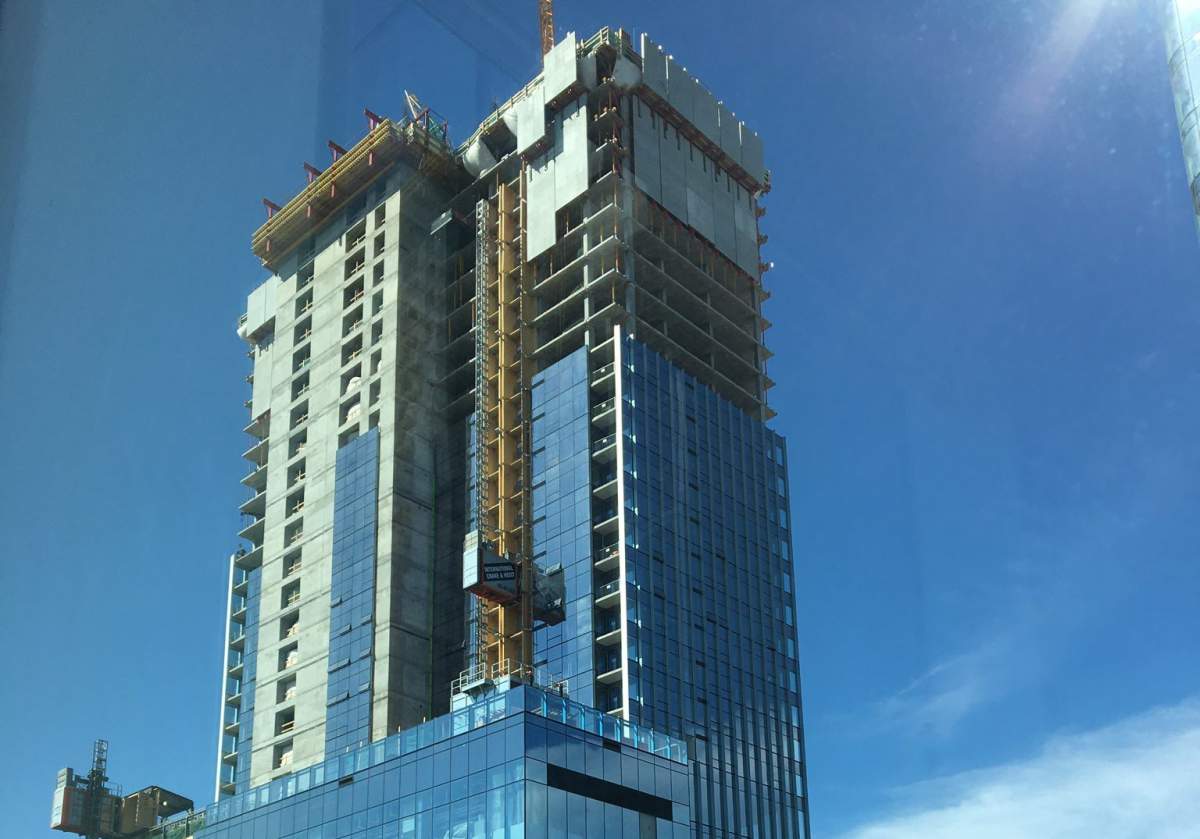A U.S.-based report forecasts that buildings near LRT can bring in lease rates as much as 65 per cent more than buildings that are car-dependent.

Transwestern, in a Building Design and Construction report, said an analysis of 15 major metro areas saw that dramatic difference in average rent — with figures ranging from $43.48/sf where transit is the best means to get to work, compared to $26.01/sf where employees drive.
Interesting numbers, say Edmonton observers, but you won’t see that large margin here. We don’t have that extensive of an LRT, said Phil Goh, a senior VP specializing in leasing and sales for Colliers International.
“If you want to extrapolate that idea out, and look at based on where the LRT will go, I’d say in the future you probably would have a slight premium,” he told Global News.
“I don’t know if 65 per cent is going to be accurate by any means but probably something closer to 10 or 20 per cent might be quite realistic for those buildings that would be closer to the LRT in a suburban market.”
Goh said the U.S. study focused on much larger cities, and included properties where commuters would face a 10-minute walk after getting off the train.
“In a market like Edmonton where it is cold most of the year, to be able to get off the LRT or any kind of rapid transit system and be with in one block of your office building rather than three or four (blocks), I think that would be certainly a premium associated. Do I think it would be as high as 65 per cent? I would be very surprised. I don’t know if there’s any category in Edmonton that’s going to give you a 65 per cent premium.”

Get daily National news
Eventually you’ll see the trend go in that direction. However, Percy Woods, the president of the Building Owners & Managers Association of Edmonton said the Valley Line will have to get established for ridership to take hold. Woods said vacancy rates are around 15 per cent, as companies are taking advantage of deals in “A-class” buildings, that have space available.
“There is absorption,” Woods said after space became available in the Ice District with the Edmonton Tower, and the soon to open Stantec building. “People are playing a little bit of musical chairs and moving in the flight to quality and looking at getting into better and more improved space.”
Like Goh, Woods figures there will be a premium for landlords next to transit.
“Certainly it’s market sensitive. I’m not sure 65 per cent would work out in all Canadian markets, but certainly there is an increase.”
The Valley Line LRT will open in 2020, and Ian O’Donnell of the Downtown Business Association said he’s hearing how those who work downtown are preparing.
“I would anecdotally say that friends and colleagues that live along the southeast line are expecting to park their car more often and use transit and certainly they’re hoping that the desirability of their area will increase because of the efficiency of getting in and out of the downtown without having to pay for parking.”
The Transwestern report also said transit options helped developments in the suburbs. It cited stats that saw an average rent of $33.43/sf being nearly 50 per cent higher than rent in car-dependent buildings.










Comments